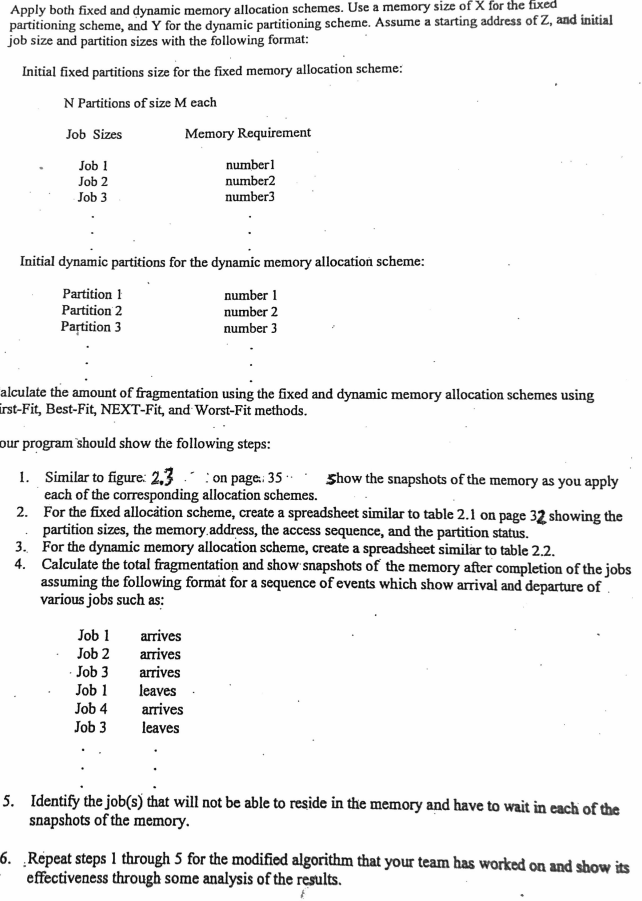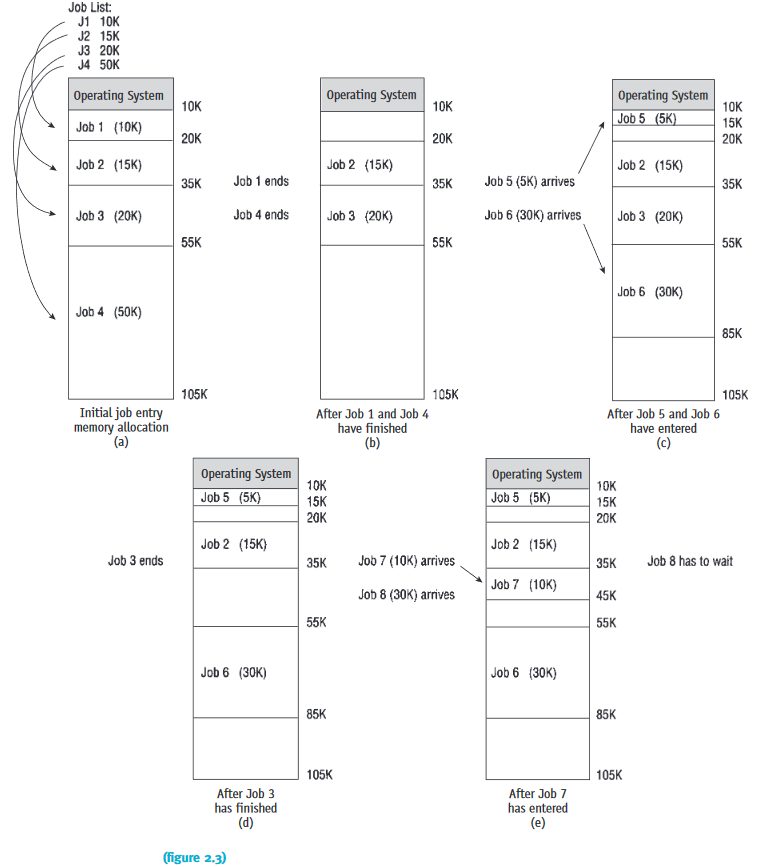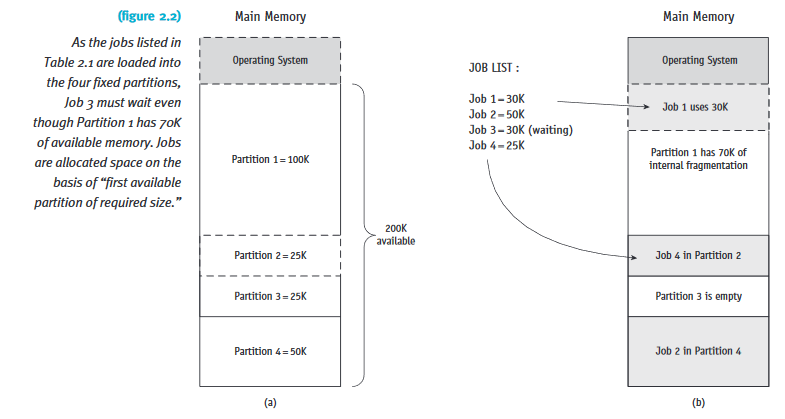



Apply both fixed and dynamic memory allocation schemes. Use a memory size of X for the fixed partitioning scheme, and Y for the dynamic partitioning scheme. Assume a starting address of Z, and initial job size and partition sizes with the following format: Initial fixed partitions size for the fixed memory allocation scheme: N Partitions of size M each Job Sizes Memory Requirement Job 1 number 1 Job 2 number2 Job 3 number3 Initial dynamic partitions for the dynamic memory allocation scheme: Partition 1 number 1 Partition 2 number 2 Partition 3 number 3 alculate the amount of fragmentation using the fixed and dynamic memory allocation schemes using irst-Fit, Best-Fit, NEXT-Fit, and Worst-Fit methods. our program should show the following steps: 1. Similar to figure: 2.3 con page: 35 Show the snapshots of the memory as you apply each of the corresponding allocation schemes. 2. For the fixed allocation scheme, create a spreadsheet similar to table 2.1 on page 32 showing the partition sizes, the memory address, the access sequence, and the partition status. 3. For the dynamic memory allocation scheme, create a spreadsheet similar to table 2.2. 4. Calculate the total fragmentation and show snapshots of the memory after completion of the jobs assuming the following format for a sequence of events which show arrival and departure of various jobs such as: Job 1 arrives Job 2 arrives Job 3 arrives Job 1 leaves Job 4 arrives Job 3 leaves 5. Identify the job(s) that will not be able to reside in the memory and have to wait in each of the snapshots of the memory. 6. Repeat steps 1 through 5 for the modified algorithm that your team has worked on and show its effectiveness through some analysis of the results. Job List: J1 10K J2 15K J3 20K J4 50K Operating System Operating System Job 1 (10K) 10K 10K Operating System Job 5 (5) 10K 15K 20K 20K 20K Job 2 (15K) Job 2 (15K) Job 2 (15K) 35K Job 1 ends 35K Job 5 (5K) arrives 35K Job 3 (20K) Job 4 ends Job 3 (20K) Job 6 (30) arrives Job 3 (20) 55K 55K 55K Job 6 (30) Job 4 (50K) 85K 105K Initial job entry memory allocation (a) 105K After Job 1 and Job 4 have finished (b) 105K After Job 5 and Job 6 have entered (c) Operating System Job 5 (5K) 10K 15K 20K Operating System Job 5 (5K) 10K 15K 20K Job 2 (15K) Job 2 (15K) Job 3 ends 35K Job 7 (10K) arrives 35K Job 8 has to wait Job 7 (10K) Job 8 (30K) arrives 45K 55K 55K Job 6 (30K) Job 6 (30K) 85K 85K 105K 105K After Job 3 has finished (d) After Job 7 has entered (e) (figure 2.3) Partition Size Memory Address Access Partition Status 100K 200K Job 1 Busy (table 2.1) A simplified fixed-partition memory table with the free partition shaded. 25K 300K Job 4 Busy 25K 325K Free 50K 350K Job 2 Busy Main Memory Main Memory Operating System JOB LIST : Operating System (figure 2.2) As the jobs listed in Table 2.1 are loaded into the four fixed partitions, Job 3 must wait even though Partition 1 has 70K of available memory. Jobs are allocated space on the basis of "first available partition of required size." Job 1 uses 30K Job 1-30K Job 2-50K Job 3 - 30K (waiting) Job 4 - 25K Partition 1= 100K Partition 1 has 70K of internal fragmentation 200K available Partition 2= 25K Job 4 in Partition 2 Partition 3 = 25K Partition 3 is empty Partition 4 = 50K Job 2 in Partition 4 (a) (b)










